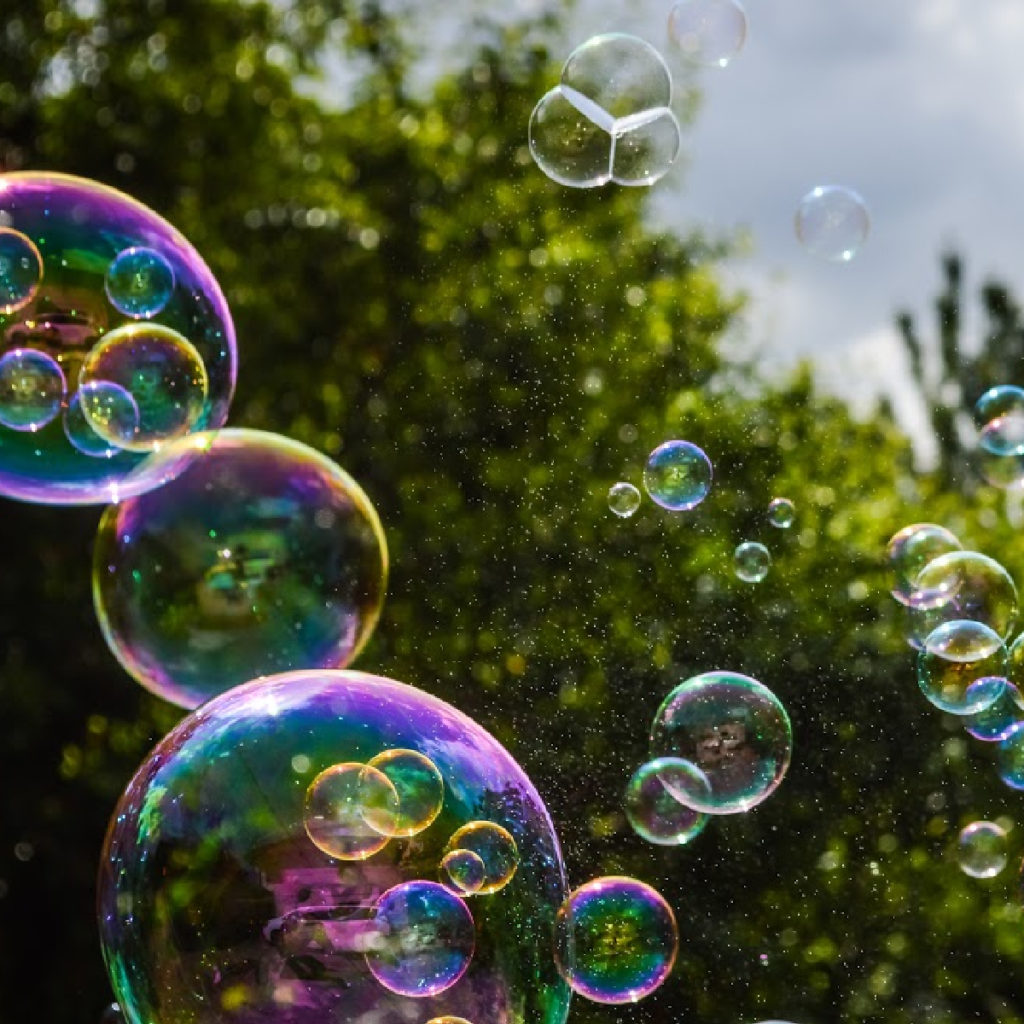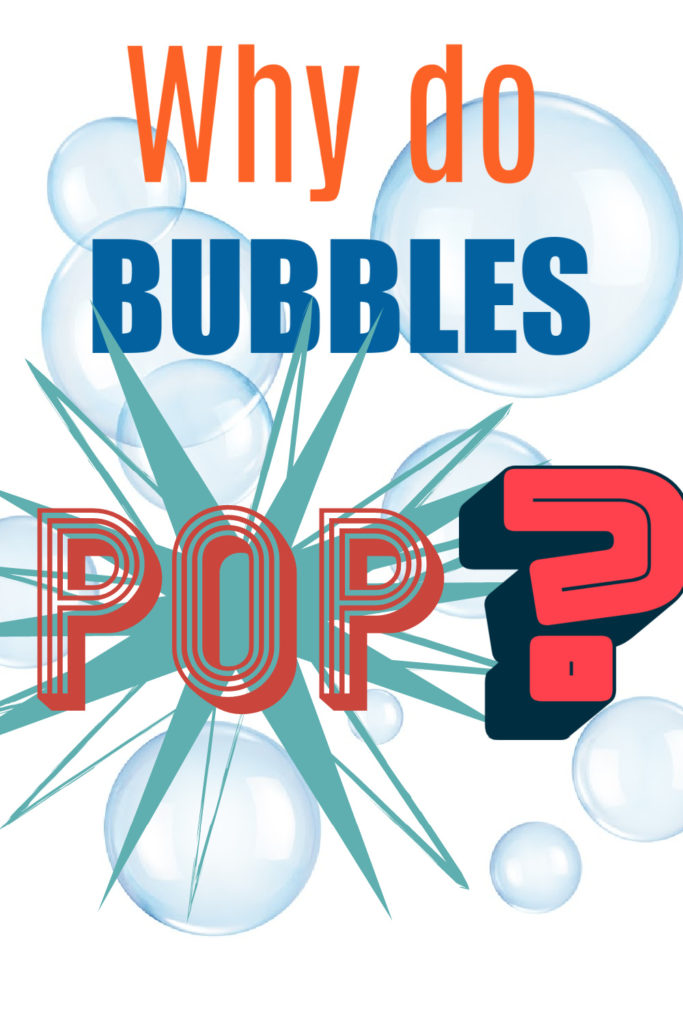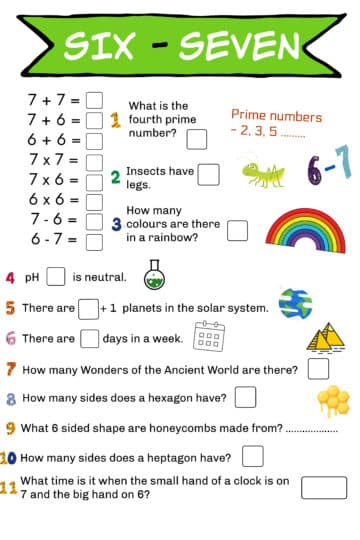A bubble is basically air wrapped in soapy water, they form because soap molecules reduce the surface tension between water molecules allowing the mixture to stretch. If air is blown through the soapy water mixture bubbles form as air becomes trapped inside.
Bubbles form the smallest possible shape to wrap around the air inside them. The familiar bubble shape of a sphere gives the least surface area for the volume of air inside the bubble.
Surface tension is an invisible force which makes a layer of liquid act like an elastic sheet. Image a pond skater walking on water, it’s surface tension that allows them to do this!

Why do bubbles pop?
If a bubble isn't poked it will pop when the water evaporates. This is why bubbles last longer on a cold day!

Glycerine is often added to homemade bubble mixes as it stops the water evaporating quite so quickly.
Last Updated on June 30, 2021 by Emma Vanstone







Leave a Reply